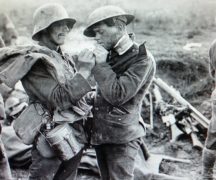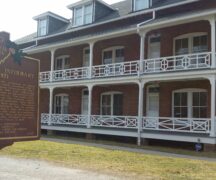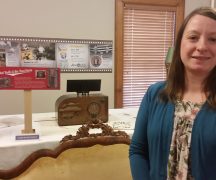By JAN LARSON McLAUGHLIN
BG Independent News
There are no war heroes buried in the Wood County Paupers’ Cemetery. No elected officials, no celebrities.
Until Saturday, they didn’t even have names.
Buried in the graves – with just numbers and no names on the tombstones – are people who relied on the charity of the county poor farm for their shelter, food and clothing.
There were Civil War widows, oil workers, blacksmiths, peddlers, tramps, farmers, shoemakers and steeplejacks.
The one gravemarker standing out from the small tablet size stones memorializes Catherine Andelfinger, who lived at the county poor farm from 1814 to 1902. Andelfinger saved her husband’s pension to buy a real tombstone – unlike all the others who were probably fortunate to have an unmarked burial space in the Paupers’ Cemetery.
But after several decades of being laid to rest in unmarked graves, the Wood County Historical Center dedicated a monument to those buried there – naming 252 people who could be documented with their final resting places in the cemetery.
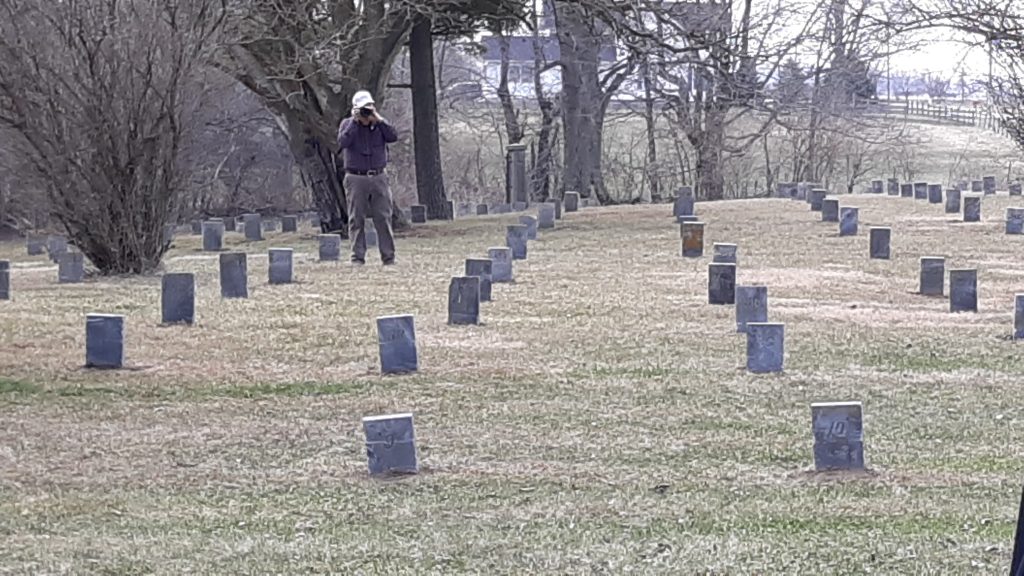
And Saturday, people who care about the history of the county gathered in the Paupers Cemetery, located on the grounds of the county historical center, formerly the poor farm which took in the less fortunate, sick, mentally ill and destitute.
“I could not be more proud to be part of this today,” said Kelli Kling, director of the historical center and museum.
“As with everything we do here, now begins the history lesson,” Kling said to the audience.
The county infirmary operated at the site for more than a century, from 1869 to 1971. The county tried to treat all the residents with respect and dignity, said Judy Ennis, president of the Wood County Historical Society Board.
However, when residents passed away, their plots were marked with just numbers. At one point, there was reportedly a chart connecting names with the numbers, but that disappeared decades ago.
But even that plot map may not have helped, since stories tell of a caretaker in the 1950s who removed the grave markers because they were too difficult to mow around. Some were reportedly placed in the basement of the infirmary. Others, the story goes, were taken to build a patio at one of the worker’s homes.
At some point, the stones in the basement were returned to the cemetery – though the exact location for each marker was by that time a guess. Cadaver dogs being trained at the site in the past were able to sniff out the parameters of the cemetery, one historical center volunteer noted.
“Marked with only a number, these tombstones have created quite a mystery,” Kling said.
That mystery troubled Holly Hartlerode, museum curator, and Millie Broka, of the Wood County Chapter of the Ohio Genealogical Society – who started digging, figuratively.
“They had the dream of bringing dignity and respect, not just numbers, to the people buried here,” Ennis said.
For years, Broka has been scouring obituaries for residents of the county infirmary, to determine exactly who is buried in the Paupers’ Cemetery. And though there were no heroes or celebrities – they were just as much a part of Wood County’s history, Hartlerode said.
“These people had stories – just like you,” she said to those gathering for the monument unveiling.
As she researched the people buried there, Broka found bits and pieces of their life stories.
“You start doing research, in their birth, marriage and death records, they evolve into stories,” Broka said.
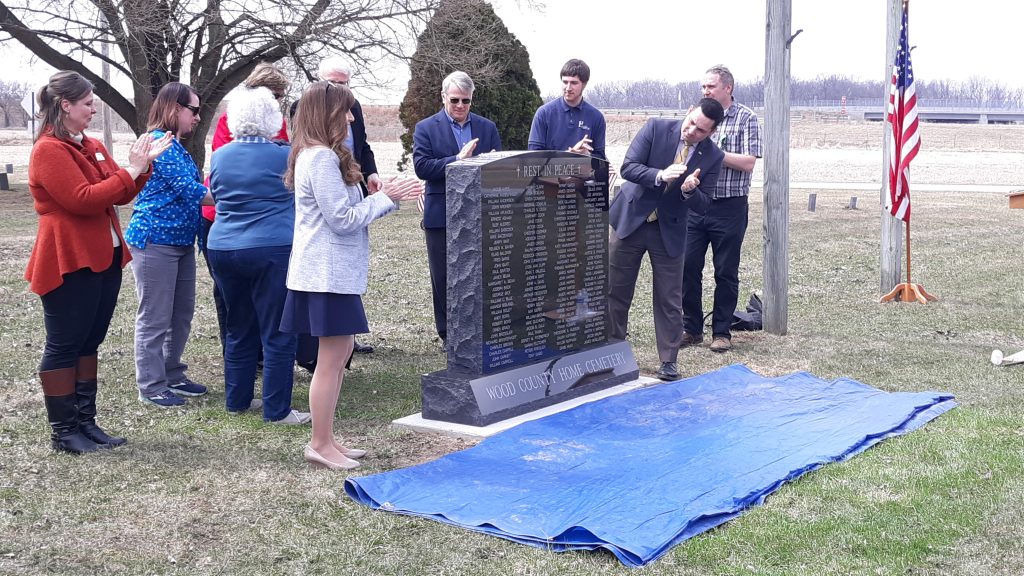
During the unveiling ceremony, both State Senator Theresa Gavarone, R-Bowling Green, and State Rep. Haraz Ghanbari, R-Perrysburg, presented proclamations for the event.
“What we have here is a very special reminder of where we’ve come from,” Gavarone said. “It’s a tribute to people who lived, worked and died here.”
The three county commissioners – Doris Herringshaw, Ted Bowlus and Craig LaHote – also spoke at the program.
“This is a great tribute to the history we have in Wood County,” Herringshaw said.


